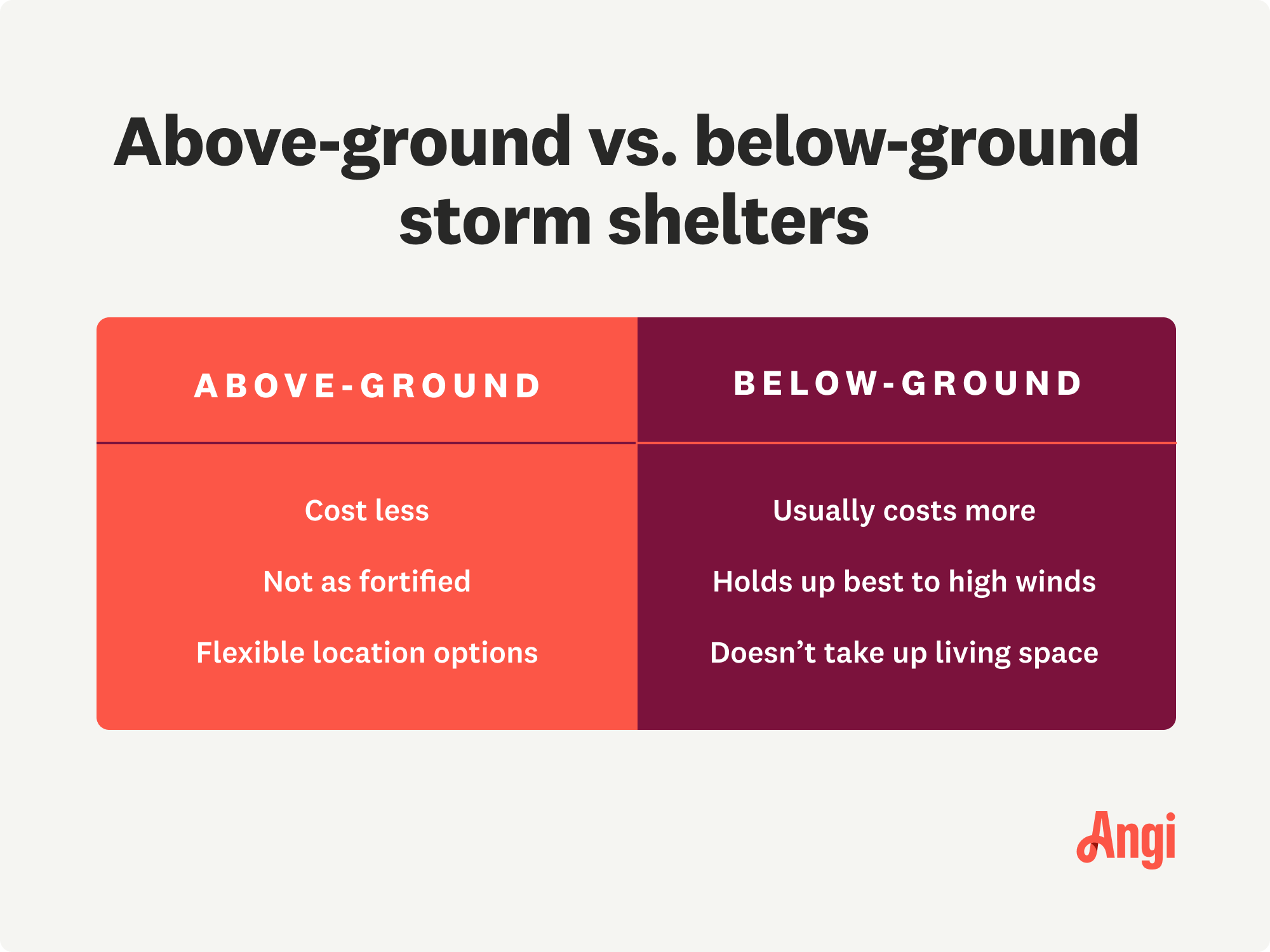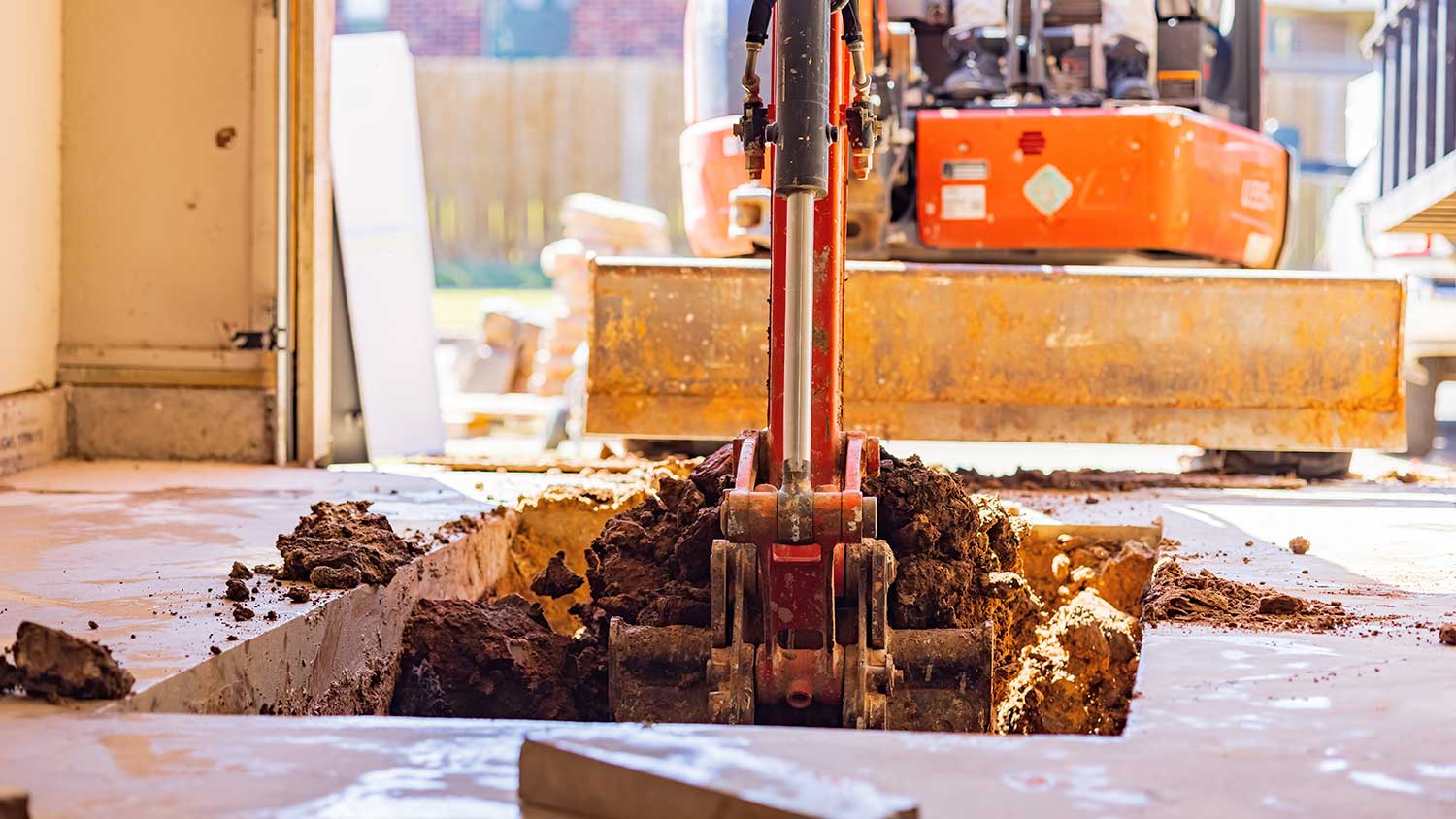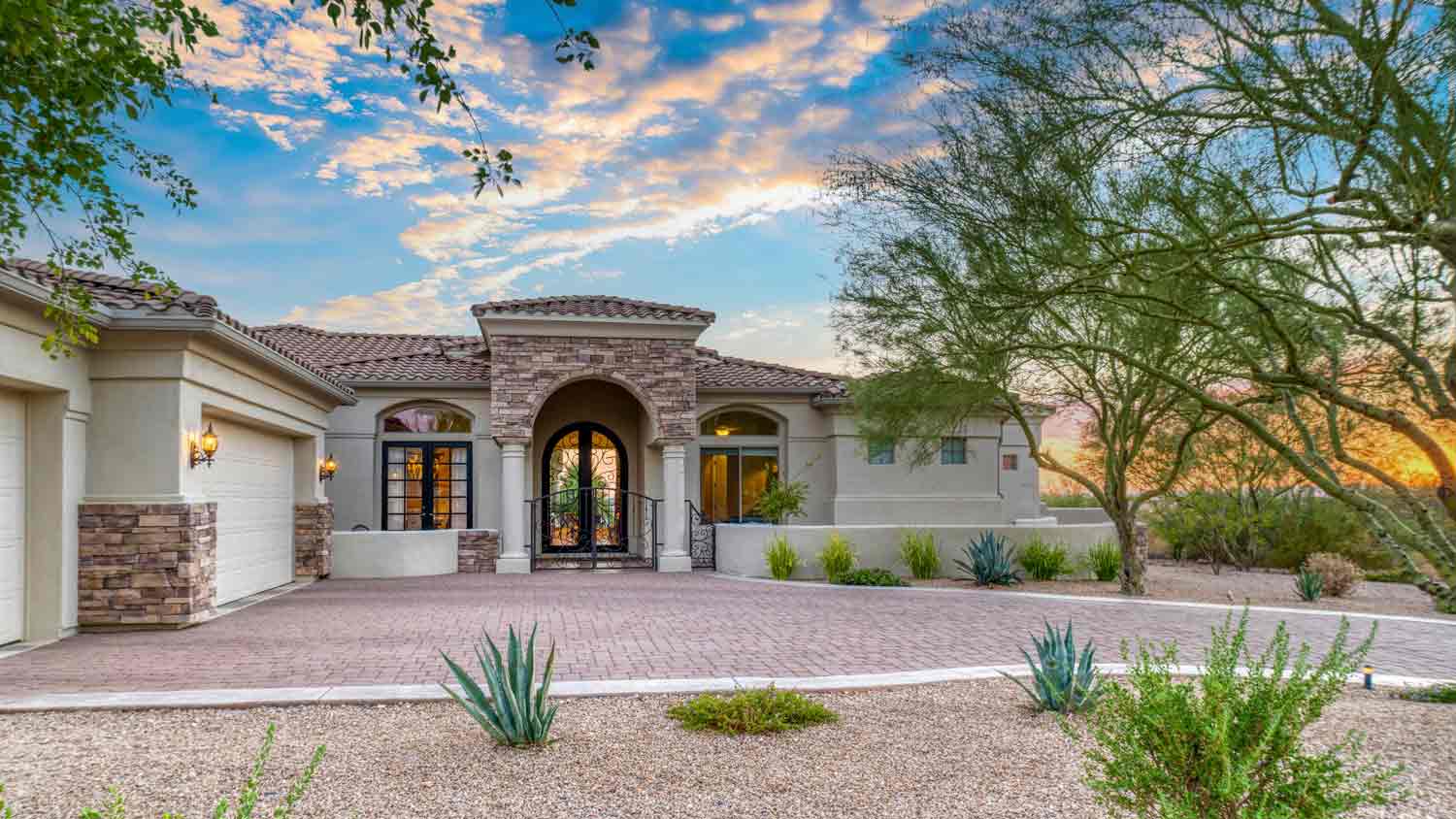
Modular homes are more affordable than stick-built homes, but by how much? Learn about modular home costs to see if they fall within your budget.
Above- or below-ground, which option gives you the best shelter from the storm?


Tornadoes can strike anywhere in the U.S. One of the best ways to prepare for them, as well as other dangerous storms, is to install a storm shelter. The best storm shelter is one that fits your budget, works with your home, and provides adequate protection.
You typically have two options when choosing a storm shelter: above-ground and below-ground shelters. Each option has its benefits and drawbacks. This guide will walk you through the differences and help you choose the best shelter for your needs.

Regardless of which option you choose, both above- and below-ground shelters offer protection against tornadoes, hurricanes, and other types of extreme weather. But there are some characteristics to keep in mind when deciding between an above- or below-ground shelter.
As the name suggests, above-ground storm shelters are built above ground. You can install one of these structures in a room in your house, the garage, a closet, or even under your bed in a Vortex Vault shelter bed. Above-ground shelters are easily-accessible because they’re located in the home, making them ideal for houses where underground shelters aren’t an option.
Though some outdated shelters might not be as secure as below-ground shelters, professionally installed, above-ground storm shelters can be as strong as their below-ground competitors.

For homes that can accommodate an in-ground shelter, you can save on space with a storm shelter that’s underground. These shelters are extremely durable and typically reinforced with steel or concrete for added security, making them ideal for places with the most extreme weather conditions. However, some dangers come with below-ground shelters, such as flooding, cave-ins, or even entry point obstruction.
Above-ground storm shelters generally cost less than below-ground shelters, but each structure is different. Here are the pros and cons of above-ground storm shelters.
There are several advantages to choosing an above-ground shelter for your home. These include:
Typically more affordable
More flexible location sites
Easy to enter when storms hit
Unlikely to flood without you knowing
Accessible for people with disabilities or mobility issues
Protects you from home invasions
Adds value to your home
But there are some cons to consider about an above-ground shelter.
Takes up space in your home
May not be large enough to accommodate your entire family
Less flexibility for the shelter’s size
Doesn’t hold up as well to extreme winds
Below-ground storm shelters tend to offer the most protection against powerful storms. Here’s a look at a few more of their advantages, as well as their drawbacks.
As you research your options, you’ll also want to consider the advantages of a below-ground shelter.
Strongest structures for high-risk areas
Ideal for homes with less indoor square footage
Flexible in size to accommodate more people
May include basement or in-ground garage space
Adds home value
There are many potential cons to an in-ground shelter worth keeping in mind.
Tend to cost more than above-ground structures
Not ideal for locations with a low water table
Less accessibility
More likely to leak and flood
Can be obstructed, trapping you inside
Might be geographically hard to install
May be hard for people with mobility issues to access
Can be dangerous to access during an active storm
The best storm shelter is one that is easily accessible, well-built, equipped with inward-opening doors, budget-friendly, and spacious enough to accommodate your entire household. For some homeowners, this may be an in-ground storm shelter, while for others, an above-ground shelter is best.
Overall, an above-ground storm shelter built by a professional storm shelter builder near you is the safest option. Though above-ground shelters were once considered less strong, well-built ones will withstand extreme weather conditions while providing you and your family with fewer flood and obstruction risks.

Another factor to consider is the cost to install a storm shelter. The national average cost for a storm shelter is around $6,300, but some shelters cost as little as $2,600 or as much as $10,200 to install. The cost depends on the size of your shelter, though the type of shelter also plays a role in how much the project will cost.
Since below-ground storm shelters typically require excavation and grading, you might need to hire a local excavation company and pay an additional $1,500 to $5,500 to install a below-ground shelter.
Prices alone may have you searching for ways to save on the cost of your storm shelter. Thankfully, both above- and below-ground storm shelters may qualify for Federal Emergency Management Agency (FEMA) funding. You might be able to save up to 75% on the cost of your shelter depending on your state’s requirements, so contact your State Hazard Mitigation Officer to ensure your project is eligible for funding.
Allie Ogletree contributed to this piece.
From average costs to expert advice, get all the answers you need to get your job done.

Modular homes are more affordable than stick-built homes, but by how much? Learn about modular home costs to see if they fall within your budget.

Discover the outbuilding cost for your property. Learn about average prices, cost factors, and ways to save when building or renovating an outbuilding.

If home is where the barn is, a barndominium may be the dream house you’ve been looking for. Here are all the details you need to know about barndominium costs.

A greenhouse can add natural beauty to your yard. Learn about standard greenhouse dimensions and how to choose the right size.

Unsure of your home’s beginnings? This guide explains how to find the builder of a home, so you can work your way through until you find the info you need.

When building a home, going custom gives you the freedom to create your dream house. Learn about the cost to build a custom home and the factors to consider.